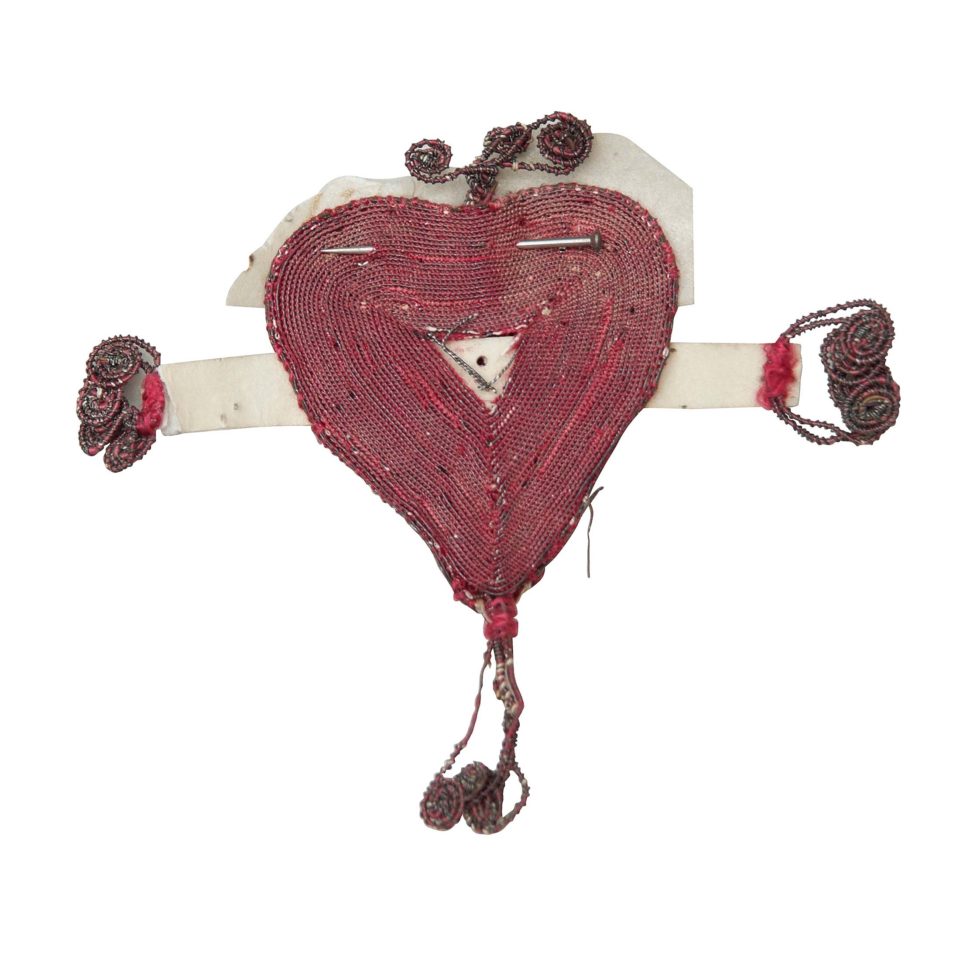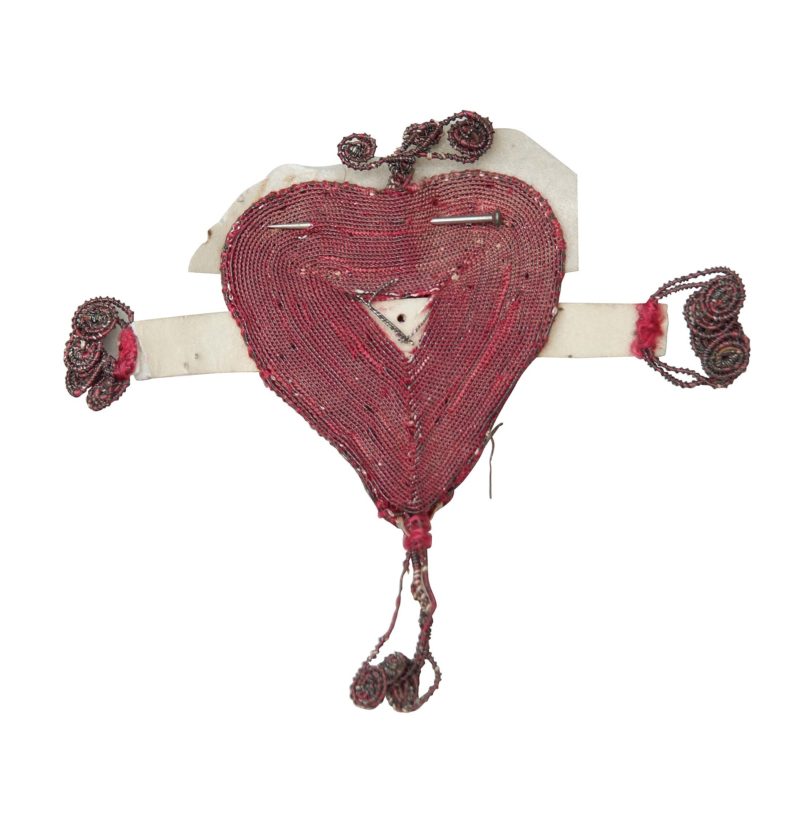About the object
Handmade
This beautifully crafted red heart clearly took time, skill and effort to make. It’s one of a number of handmade tokens in the Collection. Embroidery was a common way of decorating fabric in the eighteenth century. Lots of embroidery was produced commercially for sale. In London especially, huge numbers of women scraped a living working in the needle trades.
Women were expected to sew for their families too, and this might involve decorative as well as practical needlework. For the mothers of Foundling babies with the right skills, embroidery offered a way to create a unique token to leave with their child.
Choosing a name
We haven’t been able to connect this token with a child yet. But there is a slip of paper pinned to the heart with the name ‘William’ written on it. The Hospital’s policy was to give babies a new name when they were admitted. This didn’t stop many mothers from making efforts to name their children, or at least leave a clue to their original identity in the Hospital records.
Love hearts
The heart was the established symbol of love in the eighteenth century, as it is today. It was then believed to be literally the physical site of our emotions. Many Foundling mothers used hearts to express their love for their child. Tokens include hearts drawn on paper, metal hearts, embroidered hearts, hearts cut out of fabric, suit of hearts playing cards, and even baby clothes printed with a hearts playing card pattern.

